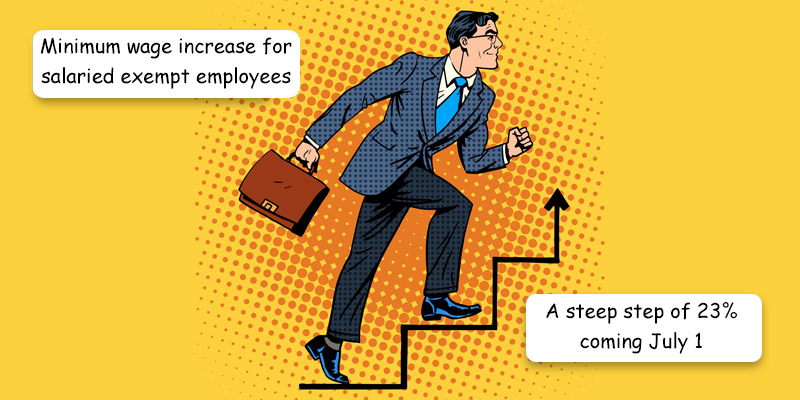While there are regular updates to the minimum wage for hourly employees, at least on the state level, changes to the minimum salary for Fair Labor Standards Act (FLSA) exempt employees are not as common. Looking back twenty years ago to 2004, the minimum weekly salary for a FLSA exempt employee was only $445. In 2016, President Obama attempted to double that weekly amount to $913, but a federal judge blocked it just days before it was to take effect. It was ultimately increased to $684, effective January 1, 2020, where it currently stands.
As of July 1, 2024, the minimum weekly salary amount will increase to $844, or $43,888 annually. An increase of more than 23%.
But, it does not stop there. On January 1, 2025, the minimum salary will increase again to $1,128 per week, or $58,656 annually. After that, the threshold will automatically update every three years, based on wage data starting July 1, 2027. The Department of Labor reserves the ability to block future increases, should the economic landscape not warrant it.
Keep in mind that paying the minimum salary alone doesn’t mean an employee is exempt from overtime. Employees must also meet the applicable “duties” test to be exempt from federal overtime requirements. This is a whole separate topic that I will not get into here. You can find the details at the DOL Fact Sheet 17A.
Some states have their own salary thresholds for exempt employees. For example, as of January 2024, Colorado’s minimum salary, to be exempt from overtime pay, is $1,057.69 per week, or $54,999.98 annually. California’s exempt salary threshold is $1,280 per week, or $66,650 annually.
Currently, employees who are exempt from the minimum wage and overtime provisions of the Fair Labor Standards Act under the highly compensated employee (HCE) exemption, which has its own specific criteria, must be paid at least $107,432 per year. The final rule will increase the salary threshold for HCE employees to $132,964 per year. On January 1, 2025, this will increase to $151,164. An increase of more than 40%.
By 2025, these increases are estimated to impact four million workers. Employers have the decision whether to increase those employee salaries to meet the new minimums or convert the employees to a non-exempt status, paying them hourly. For example, $684 weekly is equivalent to $17.10 hourly based on a 40 hour work week. Someone working at that hourly rate would need to work just over six hours of overtime to reach $844 between the regular and overtime wage. If you have a salaried exempt employee putting in more than six hours of overtime, then you are better off leaving them classified as exempt and complying with the new minimum.
Although no litigation has been filed yet, history could repeat itself, and it is possible that the same thing that happened in2016 could happen again. This could delay, block or adjust the increased amounts.
The full text of the final rule of the DOL can be found here:
https://www.dol.gov/sites/dolgov/files/WHD/flsa/ot-541-final-rule.pdf
While we make every attempt to ensure the accuracy and reliability of the information provided in this document, the information is provided “as-is” without warranty of any kind. Romeo Chicco or PayMaster, Inc does not accept any responsibility or liability for the accuracy, content, completeness, legality, or reliability of the information contained. Consult with your CPA, Attorney, and/or HR Professional as federal, state, and local laws change frequently.

